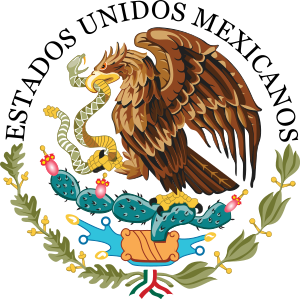by Bárbara Pérez‐Martinez
Throughout the twentieth century, Mexico has found different avenues by which to provide protection to refugees in need of protection. Among the first instruments implemented by the Mexican Government was the concept of political asylum, based on a legal institution born in the Inter American System in the 1920s designed to provide protection to high profile political and military leaders. Diplomatic asylum could also be requested at Mexican Embassies and granted to individuals or small groups of asylum seekers who were outside Mexico but in need of protection.
In the first decades of the 20th Century, thousands of refugees fleeing Franco’s Spain found shelter in Mexico from the persecution they faced in their country. Three decades later, Mexico opened its doors to hundreds of South American nationals escaping dictatorial regimes; and by the 1980s, as a result of the conflict experienced in Central America, Mexico provided protection to a large number of Salvadorians and thousands of Guatemalans.
As a result of this last exodus, in 1990 Mexico incorporated a definition of a refugee into the Mexican General Population Law. However, because by then Mexico was not a signatory of the 1951 Geneva Convention Relating to the Status of Refugees, the refugee definition incorporated in the General Population Law was based on that established in the 1984 Cartagena Declaration on Refugees. This definition considers a person to be a refugee when he/she has fled the country of residence in order to protect his/her life, safety or freedom, when these have been threatened by generalised violence, foreign aggression, internal conflicts, massive violation of human rights or other circumstances which have seriously disturbed public order.
It was not until 2000 that Mexico became signatory of the 1951 Geneva Convention Relating to the Status of Refugees and its 1967 Protocol. In 2002, the Mexican Government assumed responsibility for individual refugee status determination adjudication, a task previously carried out by the UNHCR Country Office in Mexico. Even though the 1951 Convention definition was not included in the General Population Law, as a ma`er of ‘good practice’ the Mexican Government took elements from both the Cartagena Declaration and the 1951 Convention definition of a refugee into consideration. Still, Mexico did not have a specific Refugee Legislation.
On 26th January, 2011, however, Mexican President Felipe Calderón enacted the new ‘Law on Refugees and ComplementaryProtection’. This law makes significant improvements to Mexico’s refugee protection practices. Several of the more relevant aspects of the new law include:
1. A broader refugee definition encompassing the Cartagena Declaration, the 1951 Geneva Convention (including gender as a specific nexus), as well as Sur Place refugees:
a) Owing to a well‐founded fear of persecution for reasons of race, religion, nationality, gender, membership in a particular social group or political opinion, is outside the country of his/her nationality and is unable or, owing to such fear, is unwilling to avail himself of the protection of that country; or who, not having a nationality and being outside of the country of his/her former habitual residence as a result of such events, is unable or, owing to such fear, is unwilling to return to it.
b) Has fled his/her country of residence in order to protect his/her life, safety of freedom when threatened by generalised violence, foreign aggression, internal conflicts, massive violation of human rights or other circumstances which have seriously disturbed public order.
c) When owing to circumstances that arose in his/her country of origin as a result of activities carried out during his/her stay in national territory, has well‐founded fear of being persecuted for reason of race, religion, nationality, gender, membership in a particular social group or political opinion; or if his/her life, safety or freedom have been threatened by generalised violence, foreign aggression, internal conflicts, massive violation of human rights or other circumstances which have seriously disturbed public order.
2. The Refugee and Complementary Protection Law guarantees the principles and criteria of: non refoulement (non‐forced returns), the ‘Best Interest of the Child’, nonsanction for irregular entry to the country, non‐discrimination, family unity and confidentiality.
3. It establishes the basis for clear procedures to determine eligibility, cessation, cancellation and revocation of refugee status.
4. It also allows for the establishment of mechanisms to grant Complementary Protection to those who, having not met the criteria to be recognised as refugees, could be at risk of torture, ill‐treatment or other forms of cruel inhuman treatment. With this addition, Mexico becomes the first county in Latin America to establish such protection in its refugee law.
5. It sets the basis for specific guidelines in order to grant refugee status under the prima facie criteria.
6. It outlines applicant rights, refugee rights, and institutional assistance provided to them by government institutions, such as a travel document, permission to work, access to health services and health insurance. Regarding education, refugees have access to free primary education and lower cost for secondary education, as well as to provision for the recognition of educational qualifications. Asylum seekers are provided a temporary document that protects them from forced returns. Refugees (25% in 2010) are provided with an identity card and permanent residency which allows for naturalisation within the following two to five years depending upon other aspects of their nationality.This new law confirms Mexico’s commitment to the harmonisation of legislation, to the respect of human rights of all individuals and the strengthening of Mexico’s long and generous tradition of asylum.
Bárbara Pérez‐Martinez is the Protection Director for the Mexican Commission of Aid to Refugees (COMAR) in Mexico City, Mexico









 Join our page
Join our page


0 comments:
Post a Comment